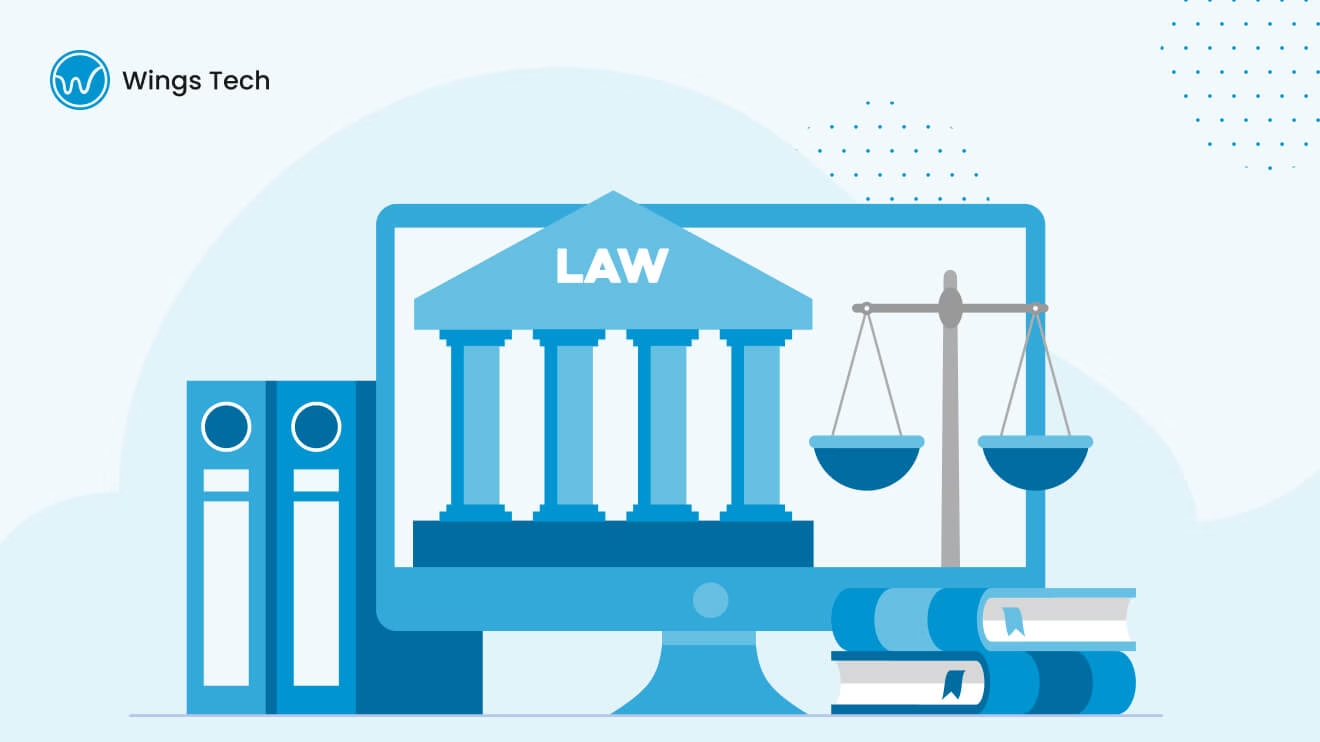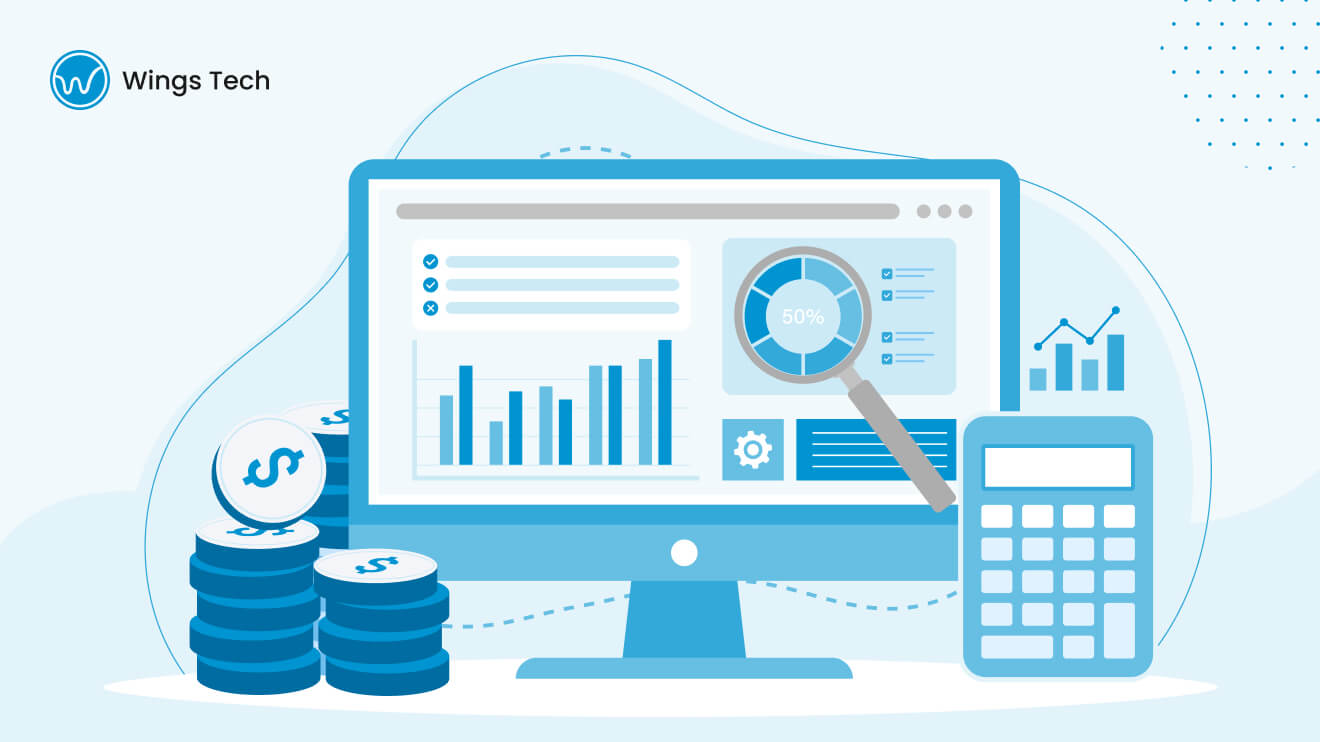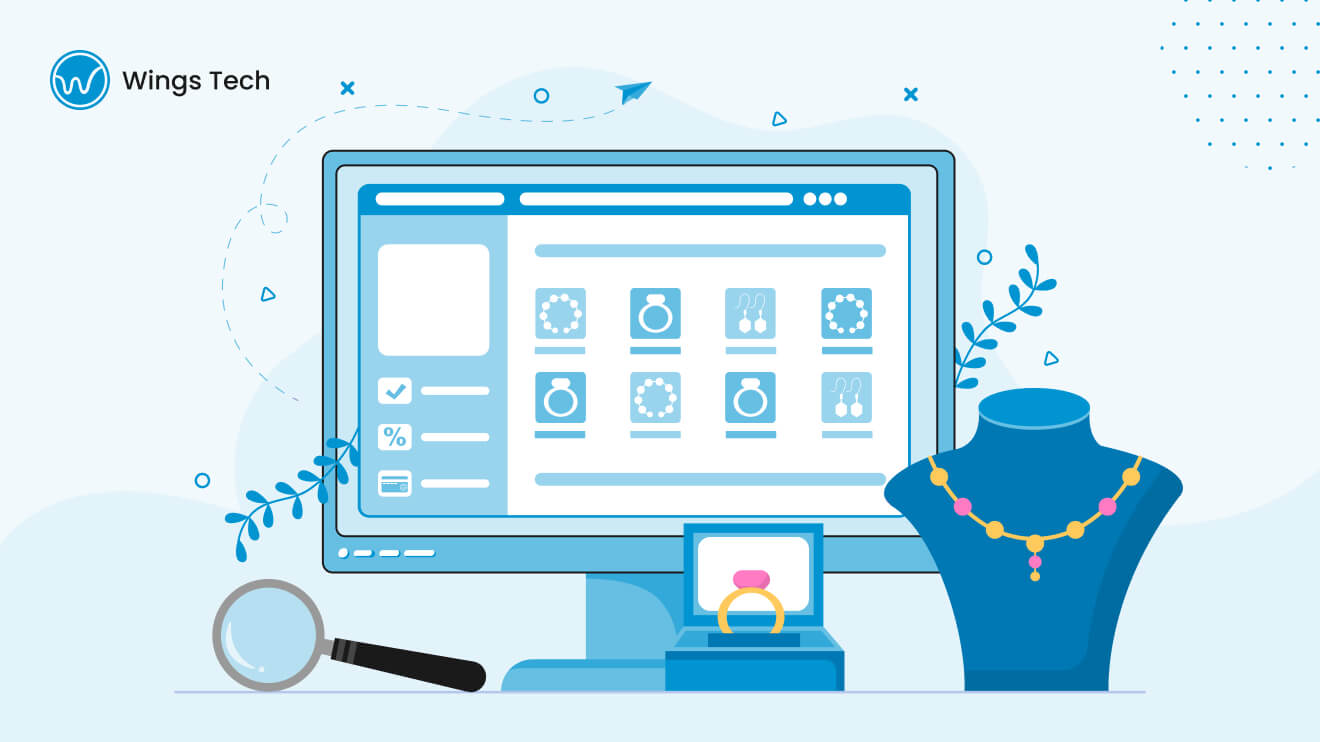Table of Contents
A producer of premium goods, a supplier with orders to fulfill, and a website that’s stuck in the early 2000s—sound familiar? It’s often a recipe for chaos in the ecommerce sector. That’s where B2B ecommerce website development comes in, not as an option but as a necessity. In contrast to its consumer-oriented cousin, B2B ecommerce isn’t about impulse purchasing; it’s about buying in bulk, complicated pricing, and deals closed through negotiation, not emoticons.
A well-designed B2B ecommerce website is not merely a storefront; it’s an automated sales team, a contract negotiator, and a 24/7 closer. In a time when inefficiency sucks the life from revenue, an investment in the proper platform is not an option—it’s survival.
What is a B2B ecommerce Website?
You can strike million-dollar deals without ever picking up the phone. That’s what a B2B ecommerce site can do. It’s an online marketplace where companies buy and sell in bulk with negotiated prices, contract-based orders, and automated order fulfillment.
It’s 100% different from B2C sites, which are built for individual consumers, not companies. Alibaba and Grainger are great B2B ecommerce examples. If you want to know how to start an ecommerce business, studying B2B infrastructure is where you should start.
Why is B2B ecommerce website development important?
If a business is still employing fax machines to receive orders, it’s going to be a nightmare. While the competition is closing deals at midnight with a click, your brand also needs a B2B ecommerce site to stay online 24/7 without Jet lag.
1. Worldwide sales
Entering new markets is no longer about attending trade shows or cold calling throughout the day. Professionally constructed B2B ecommerce websites place your products online 24/7 so you can capitalize on global demand without ever having to leave the office. Sites like Alibaba and Grainger show that borders are merely logistical issues nowadays.
2. Competitive edge
Consumers today desire convenience, personalized pricing, rapid reordering, and convenient transactions. A slow sales process will not only frustrate customers; it will send them straight to competitors who have had expert B2B ecommerce website development experience for a long time.
3. Efficient operations
Why go through manual order processing when automation can be used? A B2B ecommerce site saves money, reduces errors, and accelerates transactions. Time that was previously lost in redundant paperwork can now be used to close bigger deals.
4. Customer experience
Bulk purchases, bespoke quotes, and smart pricing are necessities, not luxuries. Businesses need flexibility, and without it, you are simply another outdated supplier.
5. Integration
A robust B2B ecommerce platform seamlessly integrates with ERP and CRM, making data insightful. Data-driven decisions in real-time can make all the difference between growth and stagnation. Spreadsheets are not a smart decision when you gotta juggle 25K transactions and order entries per day.
B2B ecommerce website development not only strengthens your business core but also enables you to operate in untapped or unknown markets. By following a strategic Website Development Process, you ensure your business is online and visible to all of your potential customers.
How a B2B ecommerce Website Works – The Workflow Explained
If spreadsheets, perpetual emails, and manually tracking orders are a logistical nightmare, then you are welcome to experiment with the next best alternative—B2B ecommerce websites. These B2B ecommerce websites don’t merely sell goods; they manage the entire supply chain with a sophistication and organization worth billions. Let’s get an eagle’s eye view into how this machine operates:
1. Order management is where it all begins
Consumers browse, choose, and purchase in bulk from the web. The system handles it, so the orders will not be “lost in transit” (i.e., human error). Back-end integrations with ERP and Inventory Management Systems (IMS) guarantee that products are in stock and ready to ship.
2. Inventory management
Inventory isn’t guesswork. Real-time monitoring keeps products in stock without storing warehouses uselessly. When supplies dwindle, it reorders automatically without you having to make frantic phone calls to suppliers.
3. Payment processing
An ecommerce site that retails B2B products needs to support custom pricing, bulk pricing, and secure payment. Customers can request net-30 terms or pay upfront, and the system supports them. This majorly avoids embarrassing invoice disputes.
4. CRM integration
Each sale, each question, each after-hours cart add-on—it’s all monitored. Integrated Customer Relationship Management (CRM) capabilities enable one-to-one marketing, deliver targeted discounts, and, most crucially, bring customers back. After all, for a successful business, you should know your customers beyond their email IDs.
5. Workflow automation
Quote negotiations, checkout process, and customer onboarding are simple processes unless they have to be done more times than you can count. B2B ecommerce website development helps you automate workflows and work like a sales pitch from a seasoned professional. No one likes repetitive tasks, and a good ecommerce platform solves this problem instantly.
6. Business intelligence
BI software interprets sales patterns, conversion rates, and performance measures so that decisions are not a ‘guess. ’ Forecast demand, price optimize, and streamline operations—all based on facts, not on gut feelings.
7. Third-party integrations
If your business operates like a solo island in the middle of the ocean, it’s drowning sooner than you know. Whether it’s ERP, CRP, or supply chain management, a successful B2B website connects it all. Your departments don’t operate in silos anymore.
In essence, B2B ecommerce website development is not so much focused on the transaction of selling merchandise as they are on creating a frictionless, automated, data-driven market space.
Key Features of a B2B ecommerce Website
A B2B ecommerce site is not only an online store—it’s a working optical nerve center that is capable of processing complicated transactions, large orders, and complicated pricing structures. This is how it does it so smoothly:
Role-based access & user management
Not everyone in a company must view everything. Role-based access control allows procurement managers to view bulk pricing, finance staff to view invoices, and executives to view analytics, without redundant overlap. It prevents things from getting muddled and maintains smooth internal approvals, just like a well-organized corporate hierarchy would.
Bulk ordering & custom pricing
While B2C websites entail single purchases, B2B purchases entail multiple purchases. Companies buy products in bulk, negotiate prices, and expect negotiable discounts. A successful B2B ecommerce website supports multiple pricing plans, which allow vendors to adjust their prices based on the quantity of orders or contractual agreements. After all, a one-size-fits-all solution does not suit corporate requirements.
Integration with ERP, CRM & payment gateways
An ecommerce site as a standalone website is a logistics nightmare waiting to happen. Inventory mismatches mean annoying back-orders in the absence of ERP integration. Sales teams have to operate in the dark in the absence of CRM integration. And without secure payment gateways, transactions are a nightmare or a security risk. Seamless integrations ensure that the site becomes an automated extension of business operations and not an added sales channel.
Mobile responsiveness & enhanced security
B2B customers are not sitting at a desk; they are approving quotes, looking at inventory, and ordering on the go. A mobile site guarantees that transactions occur seamlessly on a laptop, tablet, or phone. Meanwhile, advanced security features, SSL encryption, multi-factor authentication, and fraud prevention tools protect sensitive business data.
A B2B ecommerce site is not a nicety—it’s a necessity. Without them, businesses are essentially running a high-risk business on a fragile spreadsheet.
How to Develop a B2B ecommerce Website
Creating a B2B ecommerce site is not a question of throwing a shopping cart onto a homepage. It’s a complex process that involves planning, strategic integrations, and a great deal of patience, because in B2B, a faulty checkout button is not an annoyance; it’s a six-figure error.
Step 1: Planning & strategy
Before even laying hands on a line of code, companies must ask the big questions: Who are we selling to? What are they buying? Do they buy lots in bulk or need special pricing? The strategy must be aligned with business objectives, whether to enter new markets, maximize procurement, or boost order frequency. Without guidance, the site is an online warehouse without shelves, and customers are navigating by ‘feel’ rather than buying.
Step 2: Selecting a B2B website builder
Companies must decide between a tailored platform (more flexibility, higher cost) and SaaS offerings such as Shopify Plus, Magento, or BigCommerce (quicker rollout, pre-packaged themes). It’s like deciding between a custom-built skyscraper and renting a technology-facilitated office suite—both are useful but reliant on scalability, price, and the number of features required.
Step 3: Designing with UX, UI, and technical considerations
A B2B buyer is not aimlessly surfing for impulse purchases. They’re on a mission—viewing bulk prices, reordering inventory, and taking quotes. The UX and UI design needs to be responsive, intuitive, and productivity-optimized. That means strong search filters, fast reorders, and a dashboard that won’t bring a PhD to tears. Speed and security are paramount because a slow B2B site doesn’t lose consumers, it loses deals.
Step 4: Integration & customization – ERP, CRM, and third-party tools
A B2B ecommerce site is not a standalone system—it’s an ecosystem. It needs to harmoniously integrate with ERP (order and inventory management), CRM (customer tracking), and secure payment gateways. These need to be automated so that order fulfillment, invoicing, and customer communication are not dependent on manual email and sticky notes.
Step 5: Testing & launching the website – ensuring smooth performance
The real test is before launch. A rigorous QA process confirms that payment gateways are functioning, bulk orders don’t take down the system, and integrations are stable. Load testing, security scanning, and usability testing confirm whether the website is battle-tested or just a digital liability.
Creating a B2B ecommerce platform is not a one-time task—it’s a living, breathing platform that needs to be regularly updated, optimized, and strategically enhanced. Done right, it transforms businesses into lean, scalable, and high-margin digital enterprises.
B2B ecommerce website development best practices
Creating a B2B eCommerce website is more than merely going online; it’s all about eliminating all the extraneous points of friction that hamper sales, irritate buyers, or compel them to call the phone when they don’t want to. Here is how you get a B2B ecommerce website right.
Adding seamless UX
If your customers need a tutorial to make an order, you’ve already lost them. B2B customers just don’t have time to guess; they’re usually too busy buying in bulk, coordinating complex supply chains, or reordering staples. Site navigation, search filters, and checkout must be intuitive, fast, and optimized for business buying. Customized dashboards, one-click reorders, and a clean product catalog are not fancy features—they’re your gateway to a repetitively returning clientele.
Offering multiple payment and shipping options
With B2C, it’s easy, a credit card or a digital wallet, and the payment is done. B2B has other rules, though. Some pay cash up front, some accept purchase orders and net-30 billing, and some like credit lines. A hard payment system means deals get abandoned. The same is true for shipping—freight estimates in real time, bulk shipping rates, and logistics API integrations are a must. Because nothing kills a deal quicker than a site with “We don’t ship to your area.”
Data analytics for good decision-making
An e-commerce website without data analytics is just an online shop without a cohesive sales strategy. With user behavior tracking, abandoned carts, leading SKUs, and repeat purchasing frequency, companies can figure out what works and what does not.
Sophisticated analytics can even forecast demand, recommend inventory adjustments, and tailor marketing efforts, allowing companies to not only respond to market trends but also to foresee them. To eschew data is to rely on intuition, and in B2B, intuition alone is not sufficient to determine your Q4 revenue.
On-Toes customer support
A B2B buying is not a one-time thing, but is embedded in the fabric of an extended relationship. But that relationship can quickly be ruined the moment a buyer has an issue and is left in the dark by support. With the availability of live chat, AI-powered chatbots, and dedicated account managers, customers don’t have to raise a support ticket and wait for two business days for a reply.
Effective, knowledgeable, and proactive customer support builds buyer loyalty, especially when they feel assured that someone is always available to resolve logistics issues, bulk pricing questions, and same-day re-purchases.
A B2B ecommerce website isn’t about selling so much as it’s about creating an online infrastructure as slick as the businesses it serves. Master these best practices, and the site won’t just draw your customers in—it’ll retain them.
Best B2B ecommerce Platforms & Website Builders
B2B ecommerce website development is more than looking for the most flashy interface or the newest technology; it is about discovering a system that can handle the needs of bulk-priced-seeking buyers with custom catalogs and multi-user accounts. A quality B2B Website Builder is scalable, flexible, and able to handle the complexities of enterprise-level transactions. Let us now take a look at the top contenders.
Shopify Plus
For companies that need an out-of-the-box solution without having to hire an army of developers, Shopify Plus is the answer. It’s easy to use and ideal for B2B brands that need fast deployment and robust automation capabilities.
✔ Pros:
- No more having to spend much time developing; simply drag, drop, and sell.
- Handles high-order volumes without crashing.
- Shopify Flow automates B2B processes such as bulk orders and customer segmentation.
✖ Cons:
- High levels of personalization come at the cost of having to work with Liquid, Shopify’s templating language.
- You’ll be charged more per sale if you’re not using Shopify Payments.
- Needs third-party products to support ruleset complexity; can’t support innovative B2B functionalities in-house.
Magento (Adobe Commerce)
Magento (formerly Adobe Commerce) is for those who prefer absolute control. It’s got loads of features, it’s open-source, and it’s infinitely customizable—but that flexibility is paid for in complexity.
✔ Pros:
- You can alter everything from workflows to checkouts.
- Powerful B2B solutions that allow tiered pricing, provide customer segmentation, and enhance inventory management.
- Supports large product catalogs and high transaction volumes.
✖ Cons:
- With a steep learning curve, it takes a specialized setup and maintenance team.
- Unlike SaaS solutions, Magento requires server management, adding to your maintenance fees.
- It generally takes months before any launch.
BigCommerce B2B
BigCommerce B2B is a middle way between Shopify Plus and Magento; it’s simpler to use than Magento but has more advanced B2B features than Shopify Plus.
✔ Pros:
- It has corporate account support, special pricing, and bulk purchasing features available.
- There are no transaction charges; you get to keep all your earnings.
- API-based, it’s best suited for companies that need seamless ERP & CRM integration.
✖ Cons:
- It doesn’t offer much flexibility in design compared to Magento.
- It requires some coding experience compared to Shopify.
- Fewer third-party apps – less of a robust app marketplace than Shopify.
WooCommerce B2B
For individuals who already have WordPress set up, WooCommerce B2B is an affordable method for turning a Custom WordPress site into a big B2B store.
✔ Pros:
- Lower initial expenses in comparison to SaaS platforms.
- Anything can be customized using plugins and open-source code.
- The strong SEO capabilities of WordPress give you a special advantage.
✖ Cons:
- Performance issues arise when large catalogs slow down WordPress sites.
- The security threat necessitates regular updating to prevent vulnerabilities.
- Plugin dependency – the most crucial B2B functionality relies on third-party plugins.
Custom-built solutions
For companies with very specific needs that generic platforms just cannot meet, a custom-built B2B ecommerce website is the most ideal solution.
✔ Pros:
- Complete control is granted with tailored workflows, pricing models, and bundled solutions.
- No reliance on third-party subscription-based schemes.
- Designed for scale, it was created to enable sophisticated B2B processes.
✖ Cons:
- High initial investment in coding, testing, and deployment.
- Longer time-to-market (It can take weeks, months, or years) to develop.
- To regularly maintain your site, IT support is necessary.
How to choose the right partner for B2B ecommerce website development
Choosing a B2B ecommerce website development partner is almost like hiring a CFO: a poor decision siphons your energy, stifles your growth, and has you scrambling to make it work. The right one, on the other hand, constructs a foundation that scales and develops with you, clicks into your ERP and CRM, and remains rock solid when thousands of orders pour in.
What to look for:
- Industry experience – B2B ecommerce is not a flash-in-the-pan D2C store with a bulk order button. Your developer must be knowledgeable about custom pricing, role-based access, and multi-user accounts.
- Technical skills – Do they possess Magento, Shopify Plus, BigCommerce, or a custom solution background? Request case studies and not guarantees.
- Integration capabilities – If they stumble at the mention of SAP, Salesforce, or NetSuite, it’s time to reconsider.
- Post-launch support – If your partner disappears during or after deployment, your site will crash, and there will be no one to support you.
Red flags:
- One-size-fits-all solution – If they’re trying to sell you Shopify Plus without considering your needs, they’re selling you convenience, not a solution.
- No B2B knowledge – If they get RFQs mixed up with SKUs, they’re not your partner.
- Hidden fees – Low front-end fees seem to imply higher opening maintenance fees.
Choose carefully—because in B2B, a website failure doesn’t just lose sales; it loses trust.
Conclusion
B2B ecommerce website development is not just opening an online store—it’s developing a system that keeps customers coming back for more without putting your IT department into a tailspin. From choosing the right platform to discovering a good development partner, each decision impacts scalability, security, and user experience. In B2B, a broken workflow doesn’t just frustrate customers—it brings supply chains to their knees. Choose wisely.









